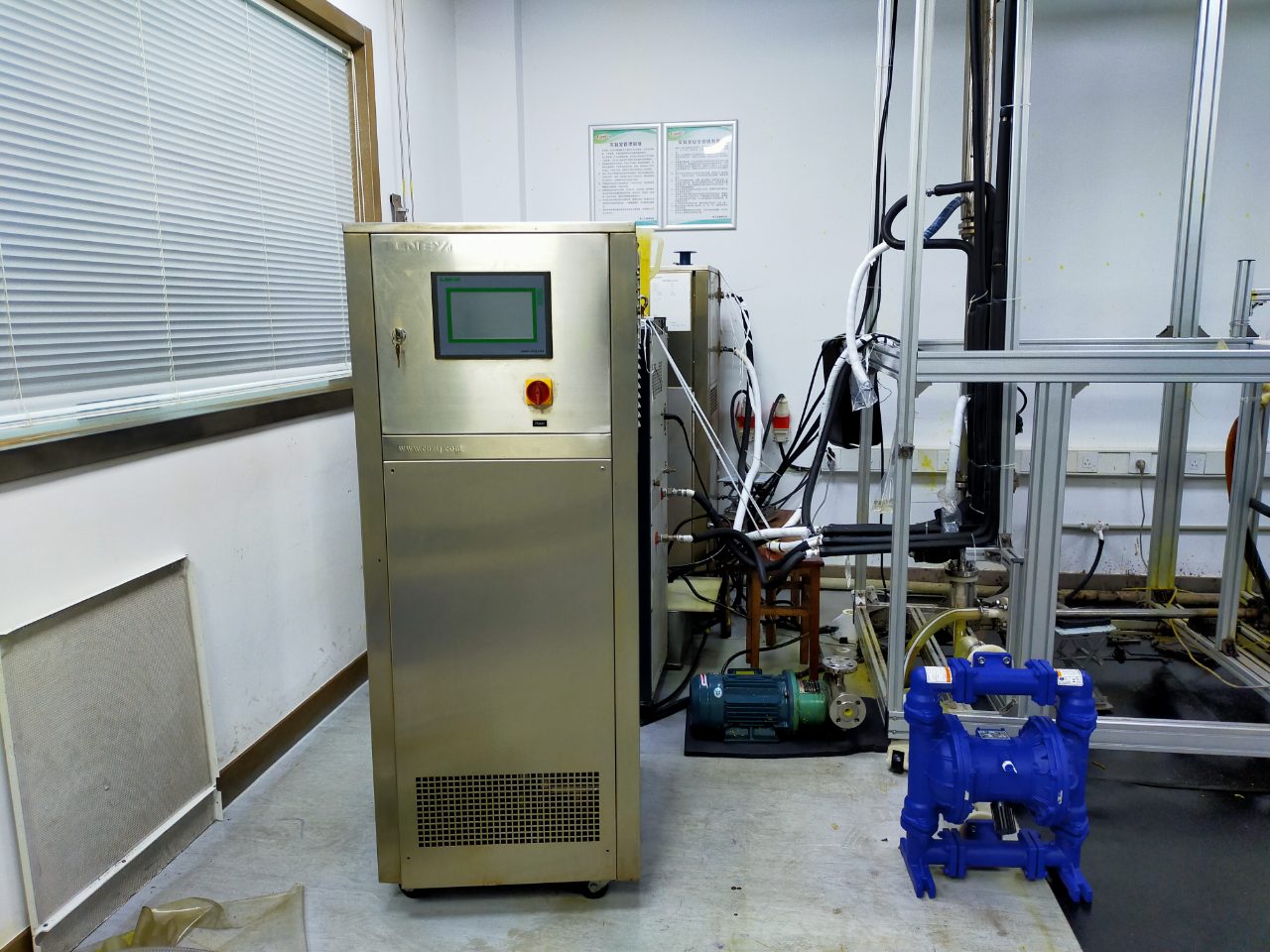What is the temperature control of the reactor?

The reactor cooling system is one of the common equipment in the chemical industry. It can not only heat but also refrigerate to meet the needs of heating and cooling in the reaction process.
There are usually three ways to control the temperature of laboratory reactors:
1. Manual control: Manually operate the knob on the front of the reactor controller.
2. Control by PC: The PC and the controller are connected by a network cable, and the operation is carried out on the PC.
3. Controlled by thermostat: Silicone oil is heated through the thermostat, and the thermostat naturally has a temperature control function. Although the thermostat heating limit (usually 250°C) is not as high as that of electric heating (can be as high as 400-500°C), the thermostat rises and falls smoothly, and the low temperature can reach -60/-80°C.
Generally, the cooling system of the laboratory reactor is divided into a tank type and a fully enclosed type. The temperature control of the reactor cooling system mainly relies on the temperature of the heat transfer oil of the reactor jacket to control the temperature of the reactor body and even the materials in the reactor. The disadvantage of the slotted type is that the heat transfer oil cannot be recycled. The more heat transfer medium the reactor needs, the slower the temperature control speed.
For example, the stainless steel reactor needs to be given heating conditions from the outside, which is equivalent to stirring or mixing. Otherwise, the reaction itself will be endothermic or exothermic. Therefore, its temperature change depends on the temperature and flow of the heat transfer oil, and the heat exchange area is the area of the jacket or the surface area of the coil in the kettle. It is cooled and heated by the heat transfer oil in the chiller system. In the process of heating and cooling, it is necessary to control the temperature difference of the tank wall as much as possible. The cold tank heats the material, the hot tank adds the cold material, the jacket or the inner tank lifts the pressure and temperature slowly, which can prevent the product from being affected to a certain extent. Thermal shock.
Our LNEYA laboratory reactor temperature control system belongs to the third type. The temperature control range is from -120 degrees to 350 degrees. It adopts a fully enclosed pipeline design and a high-efficiency plate heat exchanger, which reduces the demand for heat transfer oil, improves the heat utilization rate of the system, and realizes rapid temperature rise and fall. Continuous temperature control can be achieved in the temperature range of minus 90 degrees to 195 degrees and minus 70 degrees to 220 degrees without pressure.
Related recommendations
-
Heat transfer oil of explosion-proof cooling and heating circulator
942Explosion proof cooling and heating circulator is a commonly used temperature control equipment in laboratories. It is used in pharmaceutical, chemical, biological and other industries to provide heat and cold sources for reactors, reactors, etc. ...
View details -
LNEYA: Focus on temperature control TCU to build international advanced Chinese instruments
1041Wide temperature range: LNEYA's Chinese and production-grade multi-reactor refrigeration heating temperature control system (temperature control unit TCU) temperature range from -25 ° C to 200 ° C, of course, you can also customize other temperatu...
View details -
Defrosting Method of Ultra Low Temperature Freezer
976Defrosting method from the top 10 manufacturers of ultra low temperature freezer Wuxi Guanya = There are many manufacturers of ultra low temperature freezer, Wuxi Guanya is one of them. Many enterprise users don't know much about the defrosting af...
View details -
How to choose the chiller for cooling the mixing tank?
1150Mixing tanks are used in coatings, medicine, building materials, chemicals, pigments, resins, food, scientific research and other industries to stir, mix, blend, and homogenize materials. The mixing tank will generate heat during the mixing proc...
View details
 LNEYA Industrial Chillers Manufacturer Supplier
LNEYA Industrial Chillers Manufacturer Supplier













